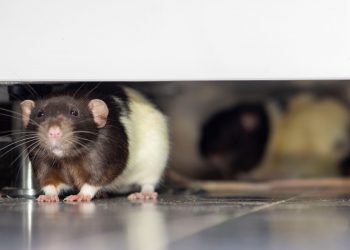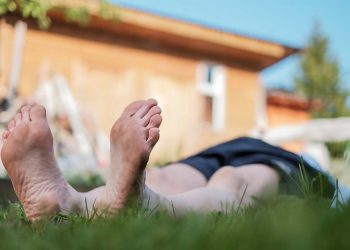Rosacea is a fairly common disorder that mainly affects the face, causing redness on the cheeks, nose, chin, and forehead areas. In the US alone, there are some 14 million people that suffer from this condition. If you are worried that you might have it but you aren’t quite sure, read on and we will talk you through some tell-tale signs, including the most common causes.
What is acne rosacea?
Acne rosacea is a common facial skin condition that may over time become more red and intense. Often, blood vessels become more visible under the skin. In the more extreme cases, rosacea can appear on the ears, neck, scalp, and chest area. If not treated, solid bumps and pus-filled pimples may begin to develop, causing further discomfort and anxiety.
This condition can even cause the nose to become more bulbous and take on a swollen appearance (often referred to as rhinophyma).
Rosacea can also affect the eyes, making them appear bloodshot and watery. Styes may often occur, which is scientifically known as ocular rosacea.

Who is more likely to get rosacea?
Those who have fairly light skin and who blush easily, are thought to be at a higher risk of suffering from the disorder. Adults who are over the age of 30 are much more likely to be affected, however, it can also be seen in adolescents, and less commonly in children.
Those with a family history of rosacea have an increased likelihood of developing the disorder. Rosacea is most common among young women, though men tend to have the more severe symptoms (typically among big drinkers).
What are the symptoms of rosacea acne?
Worried that you might have rosacea acne? With these tell-tale signs, you’ll certainly be able to tell. That said, its appearance can vary greatly from one person to the next. Not all of the following symptoms may appear at once. In any case, here are some of the primary signs of rosacea:
- Persistent redness: If your face has persistent redness, resembling sunburn or blush, that will not fade, then it could be a clear sign of rosacea.
- Pimples and bumps: Over time, pus-filled pimples and solid red bumps can begin to form, though blackheads are not common. In addition, stinging and burning sensations may occur.
- Flush face: Most people who suffer from rosacea have a history of blushing or having a flush face. This facial redness, which can come and go, is often the earliest sign of rosacea.
- Highly visible blood vessels: If small blood vessels start to appear on your skin, then it could be a sign of rosacea.
What are the secondary signs of rosacea?
- Irritated eyes: Your eyes might become irritated and become bloodshot and watery when suffering from rosacea. This is called ocular rosacea (as mentioned above) and can include styes and the swelling of the eyelids. Severe cases of rosacea, if left untreated, can result in corneal damage and even loss of sight. In this case, you should consult a doctor / an optician as soon as possible.
- Dry skin and appearance: The skin central to your face might appear and feel rough, thus looking very dry.
- Plaques: Plaques are raised red patches on the skin which can develop without changing the appearance of the surrounding flesh.
- Stinging sensation: Your skin may feel as though it is stinging or burning, with the sensation of tightness and itchiness accompanying it.
- Swelling: Facial swelling (aka Edema) can also occur both independently, and alongside other tell-tale signs of rosacea.
- Thickening of the skin: Rosacea can make the skin thicken and enlarge with excess tissue. This results in a condition called rhinophyma (as mentioned above), creating a bulbous appearance of the nose.
- Signs beyond the face: Neck, chest, scalp, or ears are other areas in which signs of rosacea may develop over time.
What causes acne rosacea?
Now that you know what symptoms and signs may point to acne rosacea, what causes it? As yet, the main causes of rosacea are unknown. However, there are different theories regarding the cause which you might find useful.
One theory suggests that rosacea could be a disorder of the blood vessels. Others, that rosacea could be caused by skin mites, a fungal infection, a malfunction of the connective subdermal layers of skin, or even some psychological factors.
Again, although we don’t know for certain what causes the condition, there are some conditions and circumstances that can seem to trigger it.
What causes acne rosacea in adults?
Rosacea can often be mistaken for acne, rosy cheeks, or simply sunburn. However, we know that some of the most common triggers for rosacea include:
- Drinking excessive alcohol
- Hot or spicy foods
- Smoking
- Heat
- Emotional stress
Rosacea can be embarrassing and a great cause of anxiety. And of course, if left untreated over time, it can get much worse.
What causes acne rosacea in kids/children?
Although it is not as common, rosacea in children is typically triggered by the following things:
- Extreme hot or cold temperatures
- Eating spicy food
- Hot drinks
- Certain skincare products that contain fragrances
How to treat rosacea?
There is more than one Acne Rosacea treatment you can try. If you are suffering from the condition, we recommend contacting your doctor. They will likely prescribe one of the following methods of treatment depending on the severity of your condition:
- Medicines: Your doctor can prescribe both oral and topical remedies in order to treat the bumps, redness, and pimples. Once medicines bring the condition under control, they can then be used to maintain the constant state of remission.
- Surgery: In extreme cases, doctors can use lasers to remove any visible blood vessels from your skin. This will limit the amount of redness on the face and in some cases can correct any nasal disfigurement.
Conclusion
All in all, rosacea acne is an irritating skin condition that can be the cause of much anxiety and discomfort. With a combination of prescribed treatments and a continued effort to avoid the common “triggers” as mentioned above, you shouldn’t have too much trouble keeping the ailment at bay.
If you would like to explore the condition more and find some alternative methods of treatment, we recommend finding a reputable skincare website like QR8 Mediskin. There you can find out more about how to get rid of the ailment and restore your complexion to being clean and clear.












